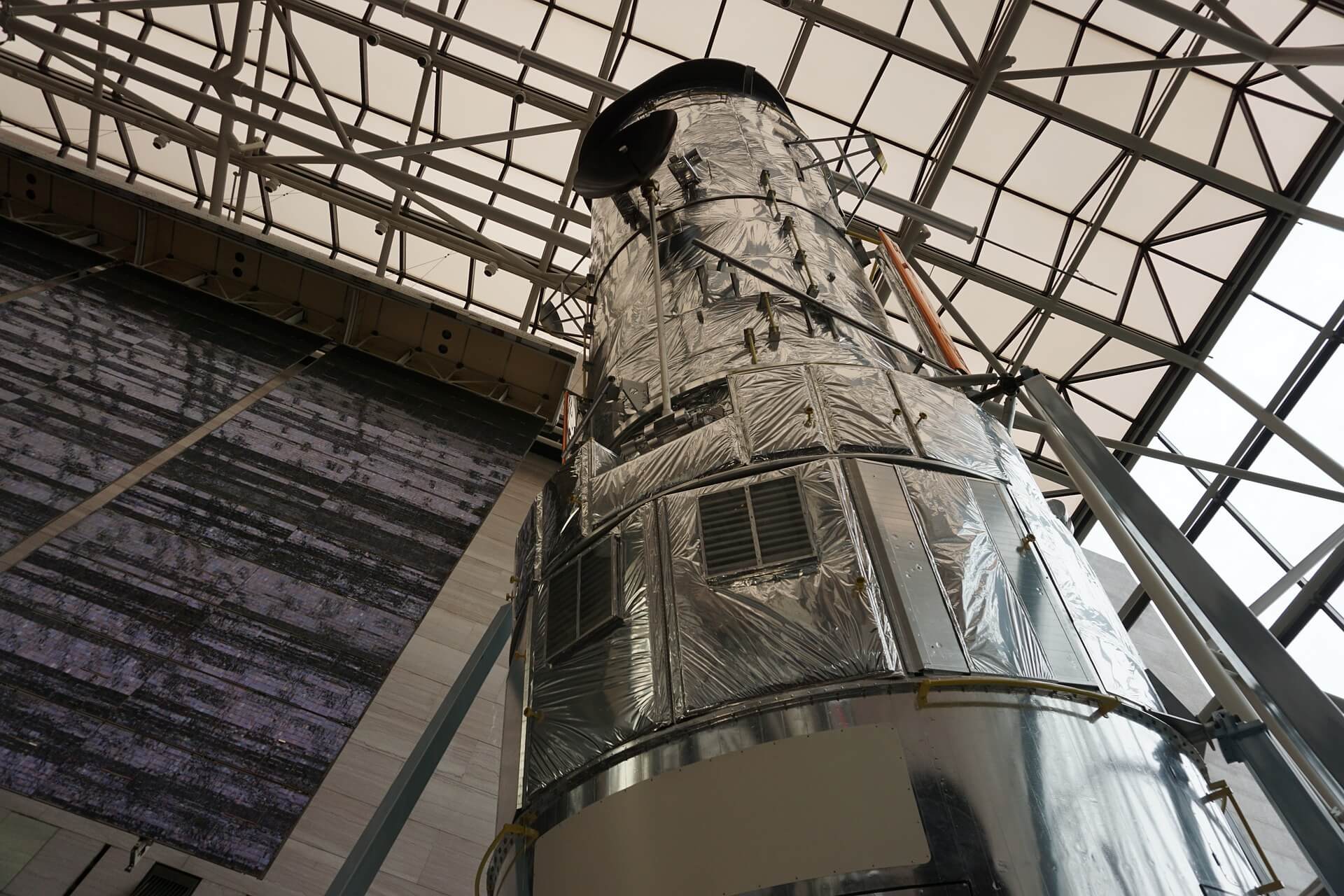Hubble Telescope Discovers ‘Einstein Ring’ in Space
The ultimate circle surrounding a galaxy cluster which came across from the new Hubble Space Telescope has been proven to be a visual indicator of the huge masses that are bending time and space in that region.
The galaxy cluster, which is termed as SDSS J0146-0929, attributes hundreds of individual galaxies all of which is bound together with the help of gravity. There’s so much mass in this region that the cluster seems like a distorting light from objects behind it. This phenomenon is, therefore, termed as an Einstein ring.
An Einstein ring, which is also known with the names of an Einstein–Chwolson ring or as Chwolson ring, is known to have been formed when light from a particular galaxy or star makes its way through a huge object en route to the Earth. And because of the gravitational lensing, the light is rerouted, making it seem to come from different regions. The term Gravitational lensing has been brought into force by Albert Einstein’s theory of general relativity. Instead of light from a source travelling in a straight line in three different dimensions, it is bent by the presence of a enormous body, which disfigures space-time. An Einstein Ring is a special case of gravitational lensing, which comes into the existence by the exact alignment of the source, lens, and observer. This in result forms symmetry around the lens, giving it a ring-like structure.
History
The bending of light by a gravitational body was speculated by Albert Einstein in the year 1912, that is, a few years before the publication of general relativity in the year 1916. The effect of the ring was first brought up in the academic literature by Orest Khvolson in a short article written in the year 1924, in which he referred to the “halo effect” of gravitation when the source, lens, and observer are in near-perfect alignment.
Several different forms of gravitational lenses have been recently known to us. Out of which, half a dozen of them are partial Einstein rings with diameters up to an arc second. Though the mass distribution of the lenses is not accurately axially symmetrical, or the source, lens, and observer are not perfectly lined up, we have yet to see a perfect Einstein ring. Most rings have been found in the radio range. The degree of wholeness and clarity needed for an image seen through a gravitational lens to certify as an Einstein ring is yet to be defined.
The very first Einstein ring was discovered by Hewitt et al. In the year 1988, who noticed the radio source MG1131+0456 using the Very Large Array. This particular observation saw a quasar lensed by a nearer galaxy into two separate but very similar images of the same object, the images stretched round the lens into forming an almost complete ring.
B1938+666, was known to be the first complete Einstein ring to be discovered, and was found by King et al. In the year1998 via visible follow-up with the Hubble Space Telescope of a gravitational lens imaged with MERLIN. The galaxy causing the lens at B1938+666 is a very old elliptical galaxy, which is known to be a dark dwarf satellite galaxy, which we would otherwise have not been able to see even with the help of our current technology.
In 2005, the collaboration of the Sloan Digital Sky Survey (SDSS) with the Hubble Space Telescope was used in the Sloan Lens ACS (SLACS) Survey to discover the 19 new gravitational lenses, 8 of which showed Einstein rings. And as per the survey conducted in the year 2009, 85 confirmed gravitational lenses were discovered but there is not yet a number for how many of them show Einstein rings. The SLACS survey is fully accountable for most of the current discoveries of Einstein rings in the optical range. The below listed are some examples which were found:
- Remi Cabanac et al. in the year 2005 discovered FOR J0332-3557, notable for its high redshiftwhich enables us to use it to make examinations about the early universe.
- The “Cosmic Horseshoe” is a partial Einstein ring which was discovered through the gravitational lens of LRG 3-757, a remarkably huge Luminous Red Galaxy. It was found in the year 2007 by V. Belokurov et al.
- Raphael Gavazzi and Tomasso Treu in the year 2008 found SDSSJ0946+1006, which is also known as the “double Einstein ring“, which was known for the presence of multiple rings seen through the same gravitational lens.
Another remarkable example is the radio/X-Ray Einstein ring around PKS 1830-211, which is unusually strong in radio. Varsha Gupta found it in the X-Ray at the Chandra X-Ray observatory. It is also known for being the first case of a quasar being lensed by an almost face-on spiral galaxy.
There is also a radio ring around galaxy MG1654+1346, discovered in the year 1989 by G.Langston et al.
Extra Rings
With the help of the Hubble Space Telescope, a double ring has been discovered by Raphael Gavazzi of the STScI and Tommaso Treu. This emerged from the light from three galaxies at distances of 3, 6, and 11 billion light years. Such rings help in apprehending the distribution of dark matter, dark energy, the nature of distant galaxies, and the curvature of the universe. And it is very rare to find such a double ring as the odds here are 1 in 10,000. Sampling 50 suitable double rings would give our astronomers with a more accurate measurement of the dark matter content of the universe and the equation of state of the dark energy to within 10 percent precision.
Conclusion
Thus, the ring is formed as the light that comes from distant objects, like galaxies, passes by “an extremely large mass, like this galaxy cluster,” NASA in a statement also explained that the light from a background galaxy is diverted and distorted around the massive intervening cluster and forced to travel along many different light paths toward Earth, making it seem as though the galaxy is in several regions at once.
The ring is named after Albert Einstein, who wrote his theory of general relativity in the early 1900s. He further advocated that a massive object would warp space and time. This process is known today as a gravitational lens. When the most massive galaxies and galaxy clusters get in line with a more distant object, they produce an Einstein ring which is a form of gravitational lens.
References:
- Astronomers Watch a Supernova and See Reruns – The New York Times
- Gravitational lensing – Hardward Education
- A Bull’s Eye for MERLIN and the Hubble – MERLIN
- HUBBLE, SLOAN QUADRUPLE NUMBER OF KNOWN OPTICAL EINSTEIN RINGS – Hubblesite
- HUBBLE FINDS DOUBLE EINSTEIN RING – Hubblesite


